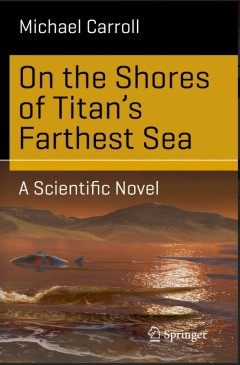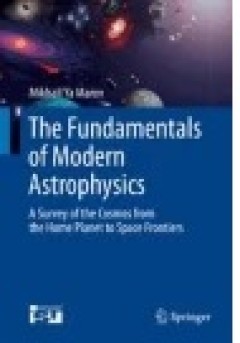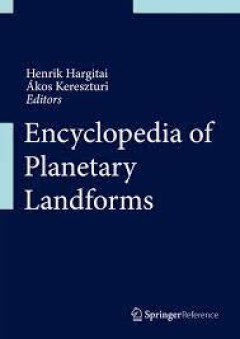Filter by

On the Shores of Titan's Farthest Sea
Titan is practically a planet in its own right, with a diameter similar to that of Mercury, methane rainstorms, organic soot and ethane seas. All of the most detailed knowledge on the moon's geology, volcanology, meteorology, marine sciences and chemistry are gathered together here to paint a factually accurate hypothetical future of early human colonization on this strange world. The views fr…
- Edition
- 1
- ISBN/ISSN
- 978-3-319-17758-8
- Collation
- XIII, 268
- Series Title
- Science and Fiction
- Call Number
- -

Worlds Beyond Our Own The Search for Habitable Planets
This is a book on planets: Solar system planets and dwarf planets. And planets outside our solar system – exoplanets. How did they form? What types of planets are there and what do they have in common? How do they differ? What do we know about their atmospheres – if they have one? What are the conditions for life and on which planets may they be met? And what’s the origin of life on Earth…
- Edition
- -
- ISBN/ISSN
- 978-3-319-09894-4
- Collation
- -
- Series Title
- -
- Call Number
- -

The Lunar Atmosphere and Dust Environment Explorer Mission (LADEE)
This volume contains five articles describing the mission and its instruments. The first paper, by the project scientist Richard C. Elphic and his colleagues, describes the mission objectives, the launch vehicle, spacecraft and the mission itself. This is followed by a description of LADEE’s Neutral Mass Spectrometer by Paul Mahaffy and company. This paper describes the investigation that …
- Edition
- -
- ISBN/ISSN
- 978-3-319-18717-4
- Collation
- V, 128
- Series Title
- -
- Call Number
- -

The Fundamentals of Modern Astrophysics
The main concepts of modern astrophysics and prospects for future studies are accompanied by numerous illustrations and a summary of the advanced projects at various astronomical facilities and space missions. Dr. Marov guides readers through a maze of complicated topics to demystify the field and open its wonders to all.
- Edition
- -
- ISBN/ISSN
- 978-1-4614-8730-2
- Collation
- XIX, 336
- Series Title
- -
- Call Number
- -

Living Among Giants: Exploring and Settling the Outer Solar System
The outer Solar System is rich in resources and may be the best region in which to search for life beyond Earth. In fact, it may ultimately be the best place for Earthlings to set up permanent abodes. This book surveys the feasibility of that prospect, covering the fascinating history of exploration that kicks off our adventure into the outer Solar System. Although other books provide surveys …
- Edition
- -
- ISBN/ISSN
- 978-3-319-10674-8
- Collation
- -
- Series Title
- -
- Call Number
- -

Thermal Convection, Magnetic Field, and Differential Rotation in Solar-type S…
This thesis describes the studies on the solar interior where turbulent thermal convection plays an important role. The author solved, for the first time, one of the long-standing issues in solar physics, i.e., the maintenance mechanism of the solar differential rotation in the near-surface shear layer. The author attacked this problem with a newly developed approach, the reduced speed of sound…
- Edition
- -
- ISBN/ISSN
- 978-4-431-55399-1
- Collation
- 38 b/w illustrations, 11 illustrations in colour
- Series Title
- -
- Call Number
- -

Encyclopedia of Planetary Landforms
This encyclopedia provides a snapshot of our current geological knowledge on solid-surface Solar System bodies. Each entry contains information about the features’ morphology, its interpretation, proposed formation models, distribution and occurrence, planetary or terrestrial analogs, and research history. The entries are fully referenced. All image captions include original image IDs. More …
- Edition
- -
- ISBN/ISSN
- 978-1-4614-3134-3
- Collation
- 1287 b/w illustrations, 575 illustrations in colour
- Series Title
- -
- Call Number
- -

Encyclopedia of Astrobiology
The interdisciplinary field of Astrobiology constitutes a joint arena where provocative discoveries are coalescing concerning, e.g. the prevalence of exoplanets, the diversity and hardiness of life, and its increasingly likely chances for its emergence. Biologists, astrophysicists, biochemists, geoscientists and space scientists share this exciting mission of revealing the origin and commonalit…
- Edition
- -
- ISBN/ISSN
- 978-3-662-44185-5
- Collation
- 219 b/w illustrations, 484 illustrations in colour
- Series Title
- -
- Call Number
- -

The Twin Sister Planets Venus and Earth Why are they so different?
This book explains how it came to be that Venus and Earth, while very similar in chemical composition, zonation, size and heliocentric distance from the Sun, are very different in surface environmental conditions. It is argued here that these differences can be accounted for by planetoid capture processes and the subsequent evolution of the planet-satellite system. Venus captured a one-half moo…
- Edition
- -
- ISBN/ISSN
- 978-3-319-11388-3
- Collation
- -
- Series Title
- -
- Call Number
- -

The State of Deformation in Earthlike Self-Gravitating Objects
This book presents an in-depth continuum mechanics analysis of the deformation due to self-gravitation in terrestrial objects, such as the inner planets, rocky moons and asteroids. Following a brief history of the problem, modern continuum mechanics tools are presented in order to derive the underlying field equations, both for solid and fluid material models. Various numerical solution techniq…
- Edition
- -
- ISBN/ISSN
- 978-3-319-32580-4
- Collation
- -
- Series Title
- -
- Call Number
- -
 Computer Science, Information & General Works
Computer Science, Information & General Works  Philosophy & Psychology
Philosophy & Psychology  Religion
Religion  Social Sciences
Social Sciences  Language
Language  Pure Science
Pure Science  Applied Sciences
Applied Sciences  Art & Recreation
Art & Recreation  Literature
Literature  History & Geography
History & Geography